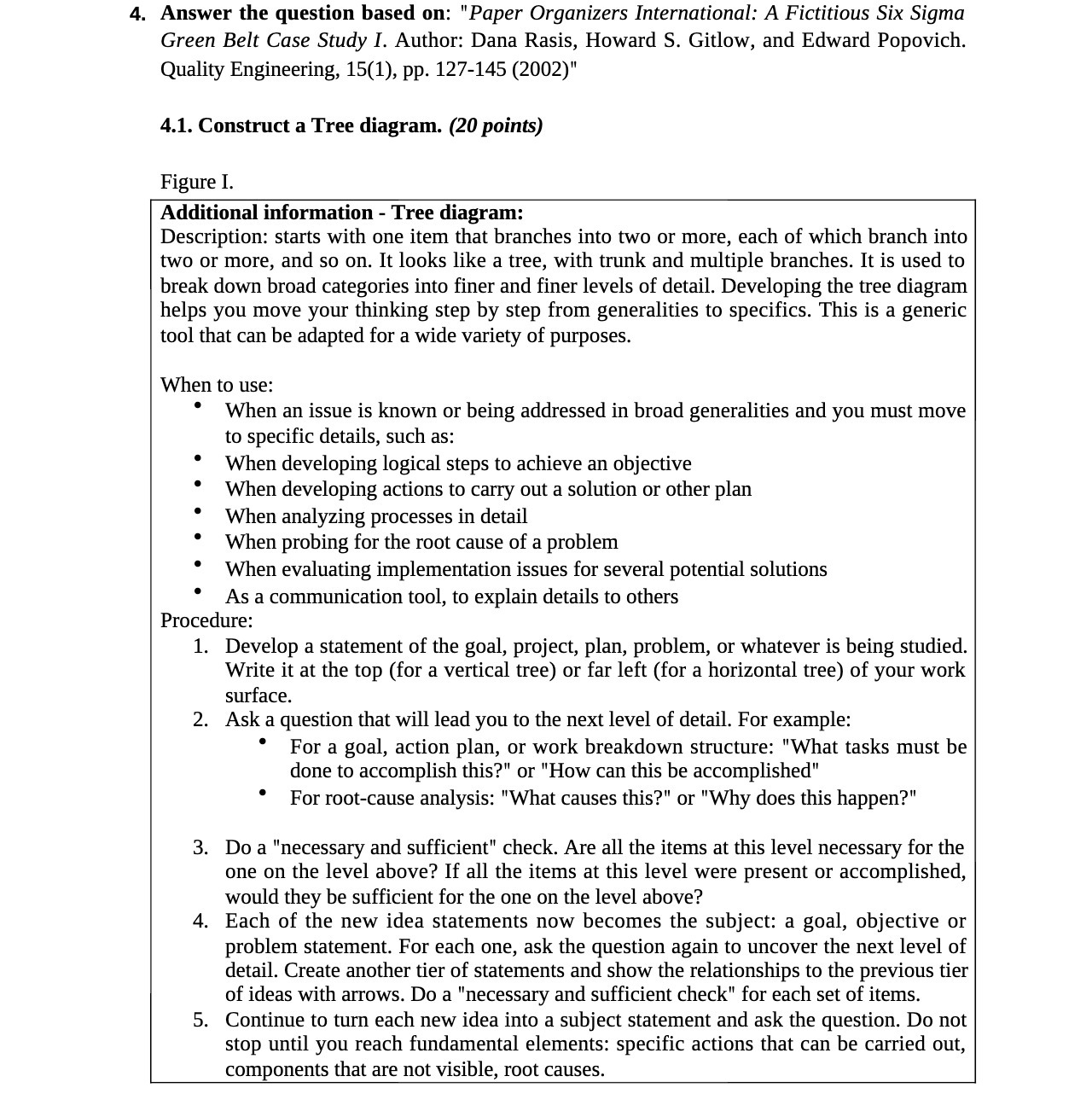4. Answer the question based on: "Paper Organizers International: A Fictitious Six Sigma Green Belt Case Study I. Author: Dana Rasis, Howard S. Gitlow, and Edward Popovich. Quality Engineering, 15(1), pp. 127-145 (2002)" 4.1. Construct a Tree diagram. (20 points) Figure I. Additional information Tree diagram: Description: starts with one item that branches into two or more, each of which branch into two or more, and so on. It looks like a tree, with trunk and multiple branches. It is used to break down broad categories into finer and finer levels of detail. Developing the tree diagram helps you move your thinking step by step from generalities to specifics. This is a generic tool that can be adapted for a wide variety of purposes. When to use: When an issue is known or being addressed in broad generalities and you must move to specific details, such as: When developing logical steps to achieve an objective When developing actions to carry out a solution or other plan When analyzing processes in detail When probing for the root cause of a problem When evaluating implementation issues for several potential solutions As a communication tool, to explain details to others Procedure: 1. Develop a statement of the goal, project, plan, problem, or whatever is being studied. Write it at the top (for a vertical tree) or far left (for a horizontal tree) of your work surface. . Ask a question that will lead you to the next level of detail. For example: For a goal, action plan, or work breakdown structure: "What tasks must be done to accomplish this?" or "How can this be accomplished" ' For rootcause analysis: \"\\Nhat causes this?" or "Why does this happen? " . Do a "necessary and sufficient" check. Are all the items at this level necessary for the one on the level above? If all the items at this level were present or accomplished, would they be sufficient for the one on the level above? . Each of the new idea statements now becomes the subject: a goal, objective or problem statement. For each one, ask the question again to uncover the next level of detail. Create another tier of statements and show the relationships to the previous tier of ideas with arrows. Do a "necessary and sufficient check" for each set of items. Continue to turn each new idea into a subject statement and ask the question. Do not stop until you reach fundamental elements: specific actions that can be carried out, components that are not visible, root causes







